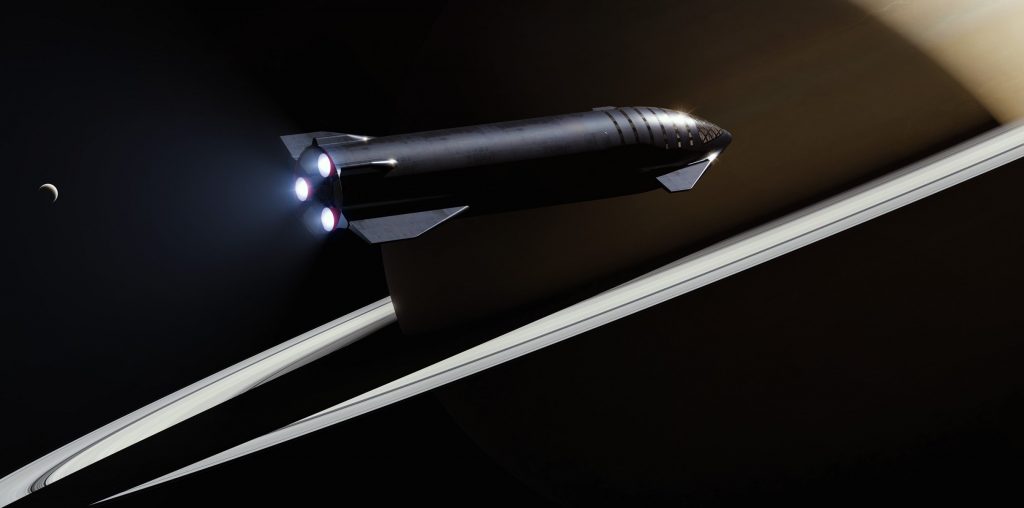In his latest round of SpaceX-related tweets, CEO Elon Musk says that the company has plans to boost Raptor’s performance by at least 15% and the number of those engines installed on Starship by 50%.
Those updated goals came hand in hand with significant changes to the design and operation of both Starship and its Super Heavy booster, which at one point was expected to utilize a “Boost” variant of Raptor that would trade thrust vector control (TVC; i.e. gimballing) and a wide throttle range for far greater thrust. At least according to Musk’s latest account, that substantially different “Raptor Boost” variant is now no more.
On July 3rd, NASASpaceflight forum member and photographer BocaChicaGal captured photos of SpaceX delivering three new Raptor engines to its Boca Chica Starship factory. Two of those engines (RB3 and RB4) featured Raptor Boost labels and were likely the first engines of their kind to complete qualification testing in McGregor, Texas. As of their arrival in South Texas, it was assumed that Raptor Boost still represented a variant of the engine with almost 50% more thrust at the cost of gimbal and throttle authority.
However, Musk himself replied to some of the resulting tweets later that evening, revealing that Super Heavy’s outer ring of up to 20 “Raptor Boost” engines would indeed have no ability to gimbal but would still be able to throttle.
Later the same day, the SpaceX CEO clarified further, stating that the company now plans to upgrade Raptor’s existing design to boost engine thrust to ~230 tons (~510,000 lbf) while still maintaining a wide throttle range and optional thrust vector control. With such an engine, “all Raptors on [a Super Heavy] booster, whether fixed or gimbaling, would be the same.” The only unique aspect of “Raptor Boost,” then, would be their installation around the inner ‘ring’ of Super Heavy’s skirt and their resulting lack of gimbal authority.
It’s somewhat unclear, then, why two of the engines SpaceX delivered on July 3rd were labeled “RB#” and one explicitly outfitted with a name tag reading “Hello, my name is Boost.” Notably, a quick side-by-side comparison enabled by those photos strongly implies that Raptor Booster engine 3 (RB3) and Raptor 79 (R79) are virtually identical aside from RB3’s rerouted plumbing and unique mounting hardpoints. In other words, barring surprises, the “boost” nomenclature appears to be more vestigial than anything.
Ultimately, as Musk notes, if SpaceX manages to boost “Raptor 2” to 230 tons of thrust, a Super Heavy booster with 33 mostly identical engines would have a peak liftoff thrust around 7600 tons (~16.8 million lbf), translating to a thrust to weight ratio of more than 1.5. For a large rocket with liquid propulsion only, a TWR greater than 1.5 is very respectable and improves acceleration off the launch pad, reduces gravity losses in the first few minutes of ascent, and thus boosts overall efficiency.
Already, Musk’s implication that 33 engines could ultimately be installed on Super Heavy is a departure from comments the CEO made barely a month ago when he revealed a base increase from 28 to 29 engines with the possibility of expanding to 32 down the road. Also new is the implication that SpaceX is considering adding three more vacuum-optimized engines to Starship’s six planned Raptors, leaving ships with six Raptor Vacuum (RVac) engines and three sea level-optimized engines (the same variant on Super Heavy).
Musk says that SpaceX has yet to decide if Raptor Vacuum will be commonized with Raptor 2, boosting its thrust, or if greater efficiency will be pursued instead. Regardless, even with six 200-ton-thrust RVacs and three Raptor 2s, Starship would produce upwards of 2000 tons of thrust in vacuum, creating an upper stage with almost as much thrust as Falcon Heavy and a fully-fueled thrust to weight ratio of ~1.7 – even better than Super Heavy.

